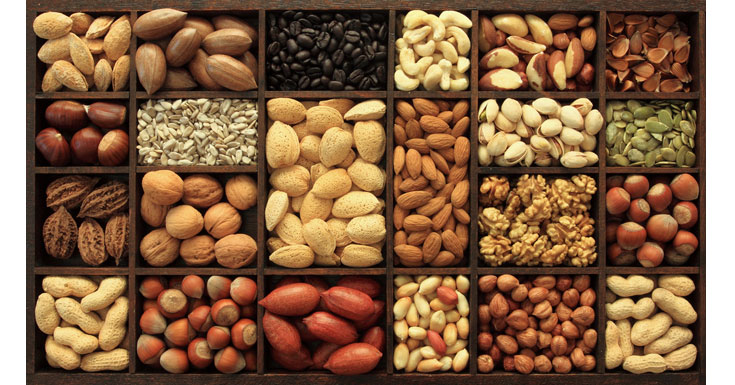Mindful eating is about eating slowly and it could be the remedy for our fast-paced times, which have more diets but also more obesity
Place a forkful of food in your mouth. It doesn’t matter what the food is, but make it something you love — let’s say it’s that first nibble from hot, fragrant, perfectly cooked chicken curry and rice. Now comes the hard part. Put the fork down.
Today’s experiment in eating involves becoming aware of that reflexive urge to plow through your meal like a public schoolboy. Resist it. Leave the fork on the table. Chew slowly. Stop talking. Tune in to the texture of the chicken, the flavour of the curry, the aroma of the rising steam.
Continue this way and you’ll experience the third-eye-opening pleasures and frustrations of a practice known as mindful eating. The concept has roots in Buddhist teachings.
And in the eyes of some experts, what seems like the simplest of acts — eating slowly and genuinely relishing each bite — could be the remedy for our fast-paced times in which an endless parade of new diets never seems to slow a stampede toward obesity.
Mindful eating is not a diet, or about giving up anything at all. It’s about experiencing food more intensely — especially the pleasure of it. You can eat a cheeseburger mindfully, if you wish. You might enjoy it a lot more. Or you might decide, halfway through, that your body really needs some salad.
A good place to try it is the Blue Cliff Monastery, in Pine Bush, NY, where curious lay people can join Buddhist brothers and sisters for a free “day of mindfulness” twice a week.
At a recent gathering, visitors filed
into a dining room for lunch. No one spoke, in keeping with a key principle of mindful eating. The point is simply to eat, as opposed to eating and talking, eating and watching TV, or eating and watching TV and gossiping on the phone while Tweeting and updating one’s Facebook status.
A long buffet table of food awaited, all of it vegetarian and mindfully prepared by two monks in the kitchen. There was plenty of rice, herbed chickpeas, a soup made with cubes of taro, a stew of fried tofu in tomato sauce.
In silence, people piled their plates with food, added a squirt or two of condiments (eating mindfully doesn’t mean forsaking the chilli sauce) and sat down together with eyes closed during a Buddhist prayer for gratitude and moderation.
What followed was captivating and mysterious. Surrounded by a murmur of clinking forks, spoons and chopsticks, the congregation, or sangha, spent the lunch hour contemplating the enjoyment of spice, crunch, saltiness, warmth, tenderness and like-minded company.
As their jaws moved slowly, their faces took on expressions of deep focus. Every now and then came a pause within the pause: A chime would sound, and, according to the monastery’s custom, all would stop moving and chewing in order to breathe and explore an even deeper level of sensory awareness.
It looked peaceful, but inside some of those heads, a struggle was afoot.
“It’s much more challenging than we would imagine,” said Carolyn Cronin, 64, who lives near the monastery and regularly attends the mindfulness days. “People are used to eating so fast. This is a practice of stopping, and we don’t realize how much we’re not stopping.”
Mindful eating is meant to nudge us beyond what we’re craving so that we wake up to why we’re craving it and what factors might be stoking the habit of belly-stuffing.
“As we practice this regularly, we become aware that we don’t need to eat as much,” said Phap Khoi, 43, a robed monk stationed at Blue Cliff.
CHEW ON THESE
OK, so you don’t happen to live in a Buddhist monastery. You can still give mindful eating a spin by incorporating a few gestures and rituals into your calorie intake
- WHEN YOU EAT, JUST EAT Unplug the electronica. Focus on the food
- CONSIDER SILENCE Avoiding chatter for 30 minutes might be impossible in some families, but specialists suggest greenhorns start with periods of quiet
- TRY IT WEEKLY. Sometimes there’s no way to avoid wolfing down a burger in your cubicle. But if you set aside one sitdown meal a week as an experiment in mindfulness, the insights may influence everything else you do
- PLANT A GARDEN, AND COOK
Anything that reconnects you with the process of creating food will magnify your mindfulness - CHEW PATIENTLY It’s not easy, but try to slow down, aiming for 25 to 30 chews for each mouthful
Potency of meditation
Though the comportment of meditation is important, however, the intention, honesty and dedication one performs with are crucial…
Potency of meditation is highly recognized and is unmatched. Research shows people who meditate have been found to increase thickness in parts of brain dealing with attention and sensory inputs and more activity in left prefrontal cortex which is related to concentration and feeling good factors… In spite of people acknowledging the importance and potency of meditation, it is invariably taken as a paramount task which is naturally compatible to few people. However, meditation is not difficult if the interest is generated in a planned manner.
Read spiritual stories & autobiographies The first step in creating interest in meditation is by reading spiritual stories. Not necessarily one needs to read profound spiritual literatures; one can read autobiographies of great saints to start with. This process enhances motivation towards the entire process of meditation since they share their experiences. Further, it instills a curiosity in knowing and comprehending nature and other metaphysical happenings and helps in understanding its soundness.
Offer Before eating meals offer it to the divine. This helps one not only in building a connection with the divine but also gives joy and contentment.
Action & surrender All actions performed should be done as a duty towards the divine. By doing so not only one performs for the almighty but also surrenders the result of ones act.
Meditate at a particular time and place Choose that time of the day when one is fairly free and the surrounding is peaceful. The best time is early in the morning or late at night. Also ensure that one meditates in a particular place as this helps creating a disciplinary space only for meditation.
Only observe Keep observing the thoughts while meditating but don’t penetrate into them. Doing so would effectively upshot into replacements of thoughts which one only observes and not penetrates into. This is a sign of progressive meditation. It takes one to stage of mindlessness that one starts feeling in 2-3 weeks time.




